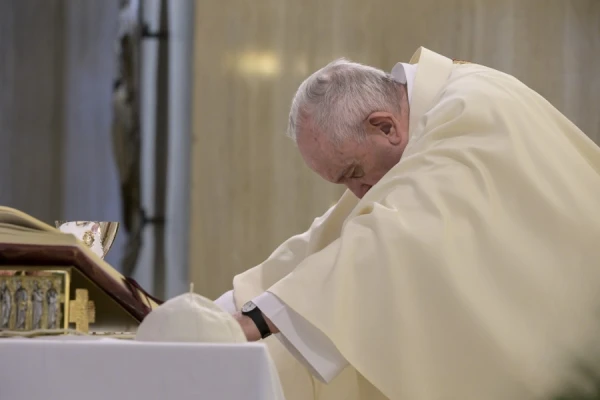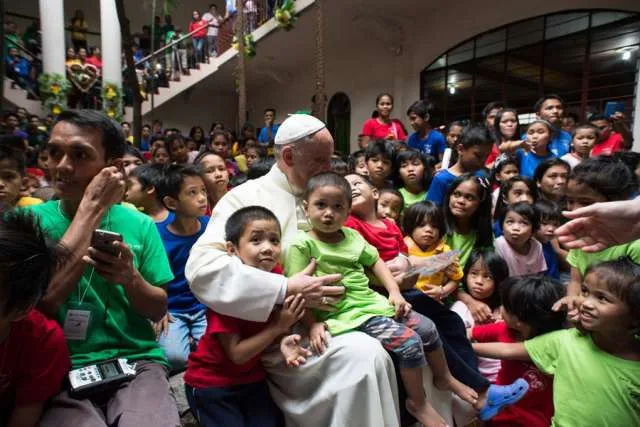
Vatican City, Apr 30, 2020 / 07:15 am (CNA).- Pope Francis prayed Thursday for the many people who have died as a result of the coronavirus pandemic, especially the “anonymous” victims buried in common graves.
More than 200,000 people have died worldwide in the past two months after contracting COVID-19, according to Johns Hopkins Coronavirus Resource Center.
In Italy, where nearly 28,000 people have died of coronavirus, funerals have been banned since March 8. Towns in northern Italy buried some bodies without a funeral and stored others in makeshift morgues awaiting the May 4 date when Italians can legally resume funerals with fewer than 15 friends and family present.
“Let us pray today for the deceased, those who died due to the pandemic, and also in a special way for what we could call the ‘anonymous deceased’. We have seen the photos of the common graves,” Pope Francis said before offering Mass April 30.
The pope’s daily Mass in the chapel of his Vatican City Residence, Casa Santa Marta, has been livestreamed every day of Italy’s coronavirus lockdown.
In his homily, Pope Francis stressed that preaching the Gospel necessitates both prayer and personal witness.
“This is the center of our apostolate, that the Father may attract people to Jesus,” Pope Francis said.
“Our testimony opens doors to people and our prayer opens the doors to the heart of the Father to draw people,” he said.
The pope was critical of those who only “proselytize” without bearing witness to the faith. He also said that those who participate in building a hospital or a school on a mission trip without witnessing to the Gospel are doing great charitable work, but not necessarily missionary work.
“Going on a mission … does not mean building large structures,” he said. “You can build a hospital or educational structure of great perfection … but if a structure is without Christian testimony, your work there will not be … a work of true preaching of Jesus.”
To be a missionary, Pope Francis recommended prayer above all: “Pray for the Father to attract people to Jesus.”
Pope Francis said that this advice holds true not only for missionaries, but for every Christian.
He posed two questions for personal reflection: “Do I really testify to the Christian life with my lifestyle? Do I pray that the Father will attract people to Jesus?”
“Let us ask the Lord for the grace to live out our work with witness and with prayer so that He, the Father, can attract people to Jesus,” Pope Francis said.
If you value the news and views Catholic World Report provides, please consider donating to support our efforts. Your contribution will help us continue to make CWR available to all readers worldwide for free, without a subscription. Thank you for your generosity!
Click here for more information on donating to CWR. Click here to sign up for our newsletter.




Respectful farewell to the ‘anonymous’ coronavirus victims. May their names be there on the mighty palm of the Almighty.